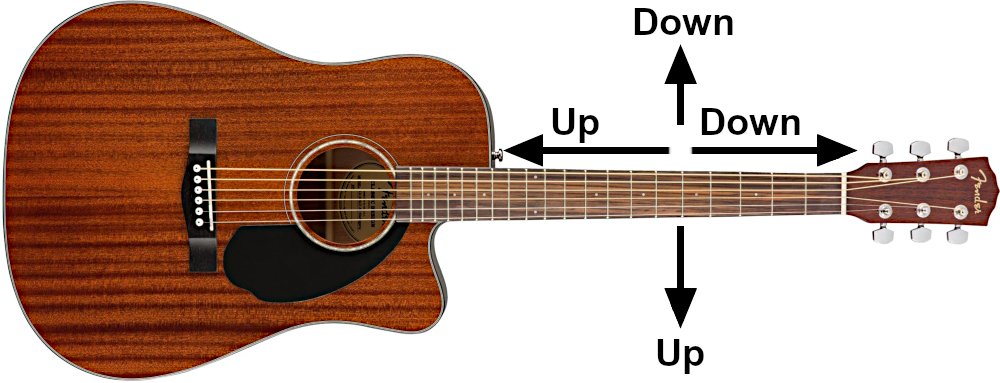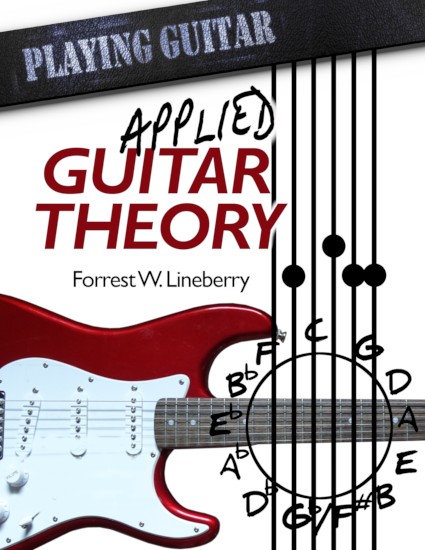The Fretboard
As stated before there are various reasons for calling the enharmonic notes by ether their sharp names or their flat names. The most basic reason is to avoid mixing sharp names with flat names whenever possible. So, for our purposes, when you’re naming the notes in ascending order use the sharp names, and when you’re naming the notes in descending order use the flat names.
Ascending:
A — A♯ — B — C — C♯ — D — D♯ — E — F — F♯ — G — G♯ — A

Descending:
A — A♭ — G — G♭ — F — E — E♭ — D — D♭ — C — B — B♭ — A

If we fill in the notes on the remaining strings it looks like this:

If we take out the sharps and flats and leave just the natural notes it’s a little easier on the eyes and easier to begin learning:

Up and Down the Fretboard
Now that we’ve seen how the notes lay out on the fretboard, we can discuss up and down directions on the guitar. Up and down always refer to pitch direction, not physical direction. Up always means to go higher in pitch. Down always means to go lower in pitch. In this respect, the guitar fretboard is backwards and upside down. With the guitar resting in a normal playing position, the notes get lower as you move your hand toward the headstock and higher as you move your hand toward the body of the guitar. The strings get lower in pitch as you move from the string closest to the floor to the string closest to the ceiling and higher as you move from the string closest to the ceiling to the string closest to the floor. This is part of the reason that neck diagrams like those used in these lessons are oriented with the nut to the left and the lower sounding strings on the bottom.


Book Title
Applied Guitar Theory
A Comprehensive guide to applying music theory on the Guitar Fretboard.
Sell Link
Coming soon!
Sample Chapter Links

